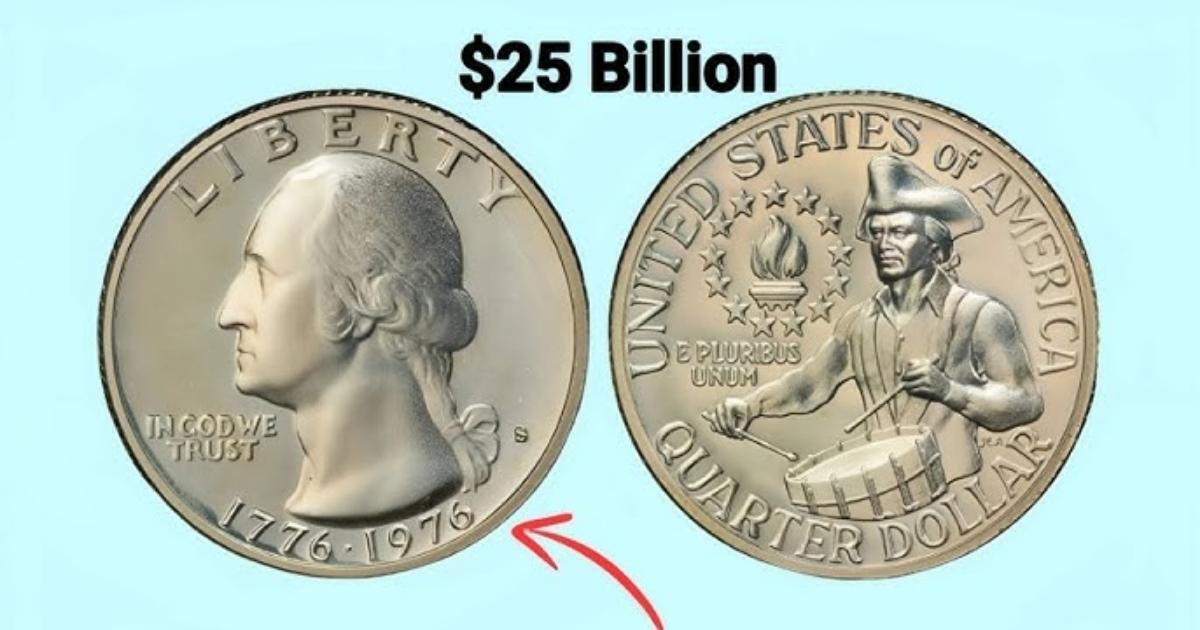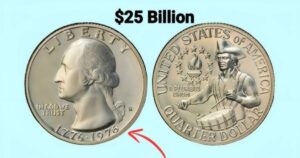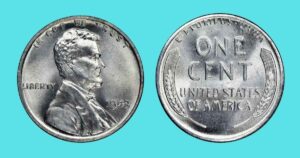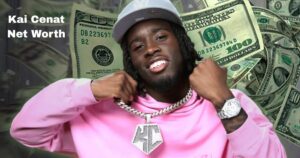The Rare 1976 Bicentennial Quarter Worth Up to $3 Million is one of the most talked about coins in U.S. history. Many collectors dream of finding this special piece. Some are searching for the bicentennial quarter no mint mark, while others look for the bicentennial quarter D mint mark. The design shows the dates 1776 to 1976 and the famous colonial drummer boy.
Not all are valuable, but a no mint mark quarter can be rare. A 1976 bicentennial quarter no mint mark in perfect condition might be worth thousands. Even a 1776 to 1976 quarter no mint mark could have value if it has minting errors. The Rare 1976 Bicentennial Quarter Worth Up to $3 Million is special because of its condition, silver content, and rarity. That is why collectors pay huge amounts for it.
What Makes This Quarter Different from the Rest?
The 1976 Bicentennial Quarter isn’t your ordinary George Washington quarter. Minted by the United States Mint to honor America’s 200th birthday, it replaced the traditional eagle reverse with a striking colonial drummer boy, a victory torch, and 13 stars representing the original colonies. This patriotic design makes it instantly recognizable to collectors and casual observers alike. Many consider it one of the most iconic commemorative coins ever made.
Some were struck with 40% silver content, especially the silver proof and uncirculated coins produced at the San Francisco Mint with the S mint mark. These higher-quality coins often appeal to numismatists because of their beauty, scarcity, and historical symbolism. Even decades later, this quarter remains a standout piece in any coin collection, valued for both its artistry and the story it tells about America’s bicentennial celebration.
Why Some Bicentennial Quarters Are Worth a Fortune
While millions of 1976 Bicentennial Quarters were made, only certain ones are worth serious money. Coins with rare mint errors like double strikes or off-centering can command thousands at auction. Add in high-grade proof quality, and you might have a coin that rivals even a rare Lincoln Wheat Penny in value. A flawless rare coin with perfect detail can make a coin collector eager to pay top dollar.
The most valuable pieces are often certified by PCGS (Professional Coin Grading Service) or NGC (Numismatic Guaranty Company). These professional grading services confirm authenticity and condition, which boosts confidence among buyers. In exceptional cases, a pristine ultra-rare specimen has sold for jaw-dropping prices, with stories of the so-called $3 million Bicentennial Quarter capturing headlines. For the right buyer, it’s not just about metal:it’s about owning a slice of history.
How to Identify the $3 Million Bicentennial Quarter
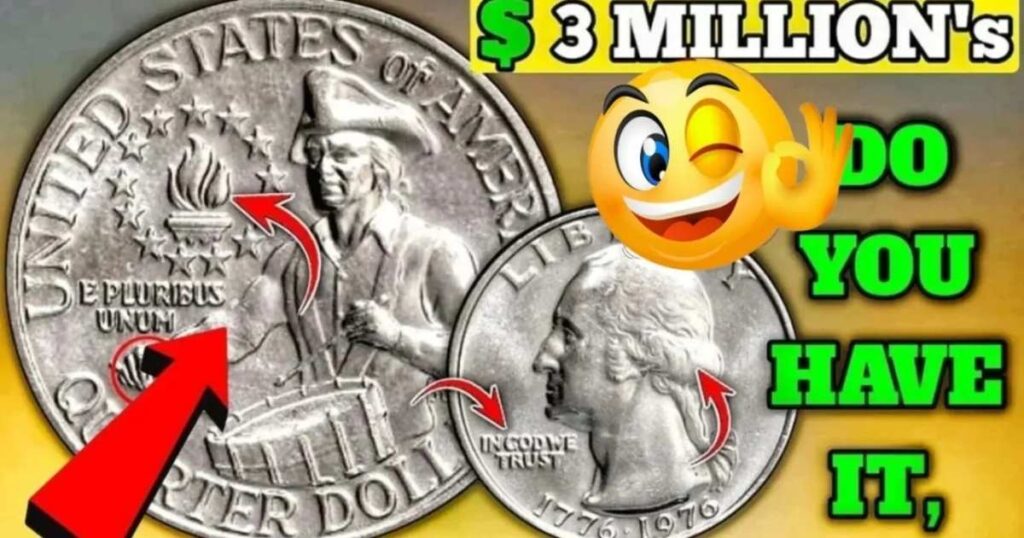
Finding a $3 million Bicentennial Quarter isn’t easy, but there are telltale signs. Look closely for minting errors:dramatic double strikes, noticeable off-centering, or missing details in the colonial drummer boy or victory torch. These unusual flaws make the coin far rarer than a standard circulation coin.
Also check the mint mark and composition. A proof or uncirculated coin from the San Francisco Mint with the S mint mark and 40% silver content is already more valuable. If it’s graded by PCGS or NGC as a perfect high-grade proof, you might be holding an ultra-rare specimen worth a fortune. Pairing these characteristics with its deep historical symbolism is what transforms a quarter from pocket change into a coin market value superstar that collectors dream about finding.
What Mint Marks to Watch For
When it comes to the 1976 Bicentennial Quarter, the mint mark can tell you a lot about its origin and potential value. Look closely under the portrait of George Washington, and you’ll find either a “D” for the Denver Mint, an “S” for the San Francisco Mint, or no mark at all for the Philadelphia Mint. Each has its own appeal, but “S” mint mark coins:especially silver proof or uncirculated coins:tend to grab the most attention among serious coin collectors and numismatists.
Some of the most valuable examples combine the right mint mark with rare mint errors like double strikes or off-centering. Pairing a desirable mint mark with 40% silver content can boost a quarter’s coin market value even more. If you’re aiming for top-dollar sales at auction, keeping an eye out for these special combinations is essential.
Read More: The Value of Wheat Pennies by Year: A Collector’s Guide
How to Get Your Quarter Appraised
If you suspect your Bicentennial Quarter might be valuable, don’t rely on guesswork:get an appraisal from professional grading services like PCGS (Professional Coin Grading Service) or NGC (Numismatic Guaranty Company). These experts will examine your coin for condition, authenticity, minting errors, and whether it qualifies as a high-grade proof or ultra-rare specimen.
An accurate appraisal ensures you don’t undersell a potential rare coin. Once graded, your coin can be listed in official registries, making it more attractive to coin collectors and increasing its chances of fetching a premium coin market value at auction. Whether it’s a simple circulation coin or a collectible coin with a rare mint error, professional evaluation is your best move before putting it up for sale.
Is It Still Possible to Find One in Circulation?
Finding a valuable 1976 Bicentennial Quarter in your pocket change isn’t impossible, but it’s a long shot. Most high-grade proof coins, silver proof issues, and uncirculated coins have already been pulled from circulation by sharp-eyed numismatists and coin collectors. Still, the occasional circulation coin does pop up, especially from old coin jars, estate sales, The Rare 1976 Bicentennial Quarter Worth Up to $3 Million or bank rolls.
The thrill of discovery keeps many collectors searching. Even though chances of stumbling upon an ultra-rare specimen with minting errors like double strikes are slim, some people have found them by carefully checking change. If you’re patient and persistent, you might uncover a Bicentennial Quarter with the right mint mark, silver content, or historical appeal to earn a place in your coin collection:or even a significant boost to your coin value.
The Market Value of Bicentennial Quarters
Prices for 1976 Bicentennial Quarters can range from pocket change to staggering amounts, depending on factors like rarity, mint mark, and overall condition. To give you a quick snapshot, here’s a simple breakdown of different types and their approximate values:
| Type of Bicentennial Quarter | Estimated Value Range |
| Common circulation strike | $0.25 – $1 |
| 40% silver uncirculated version | $3 – $8 |
| Silver proof from San Francisco (“S” mark) | $12 – $35 |
| Rare mint error example | $600 – $12,000+ |
| Ultra-rare high-grade specimen | Up to $3 million |
Knowing where your quarter fits on this scale can help you decide whether to keep it in your coin collection or send it for grading.
What Makes a Coin Collector Pay Millions?
For a coin collector to spend millions on a single piece, it takes more than just age. The coin must have a combination of rarity, flawless condition, and historical importance. A Bicentennial Quarter with a rare mint error, struck in 40% silver content, and graded by PCGS or NGC as a perfect high-grade proof is the type of find that sparks bidding wars. Add to that the patriotic design with the colonial drummer boy and victory torch, and you’ve got a coin that’s more than money: it’s a piece of history.
Another big factor is demand. When an ultra-rare specimen hits the auction block, collectors with deep pockets often see it as a once-in-a-lifetime chance to complete their coin collection. In these cases, the coin market value can skyrocket far beyond its face value,The Rare 1976 Bicentennial Quarter Worth Up to $3 Million making headlines and setting new records.
FAQ’s
What is the Rare 1976 Bicentennial Quarter Worth Up to $3 Million?
The Rare 1976 Bicentennial Quarter Worth Up $3 Million is a special commemorative coin with unique errors, silver content, and historical significance. Collectors highly prize it.
How can I identify a Rare 1976 Bicentennial Quarter Worth Up to $3 Million?
Look for mint marks, silver proof finishes, and rare minting errors. A professional appraisal can confirm if it is the Rare 1976 Bicentennial Quarter Worth Up to $3 Million.
Why is the Rare 1976 Bicentennial Quarter Worth Up to $3 Million so valuable?
Its high value comes from rarity, pristine condition, and unique historical design. Many collectors compete to own the Rare 1976 Bicentennial Quarter Worth Up $3 Million.
Where can I sell a Rare 1976 Bicentennial Quarter Worth Up to $3 Million?
You can sell it through coin auctions, online marketplaces, or reputable dealers. Always verify authenticity before listing the Rare 1976 Bicentennial Quarter Worth Up to $3 Million.
Is it possible to still find the Rare 1976 Bicentennial Quarter Worth Up to $3 Million in circulation?
While unlikely, rare coins do appear in change. Searching bank rolls or estate collections might reveal a Rare 1976 Bicentennial Quarter Worth Up to $3 Million.
Conclusion
The Rare 1976 Bicentennial Quarter Worth Up to $3 Million is more than just pocket change. Some versions like the bicentennial quarter no mint mark or bicentennial quarter D mint mark can be valuable.
A no mint mark quarter usually came from Philadelphia. Special coins such as the 1976 bicentennial quarter no mint mark or the 1776 to 1976 quarter no mint mark are worth checking. The Rare 1976 Bicentennial Quarter Worth Up to $3 Million, and top condition.
If you own a Rare 1976 Bicentennial Quarter Worth Up to $3 Million, handle it carefully. Even a small scratch can lower value. Have it graded by experts. Whether it’s a bicentennial quarter no mint mark, a D mint mark version, or a rare silver proof, it could be worth.

Ronan Seth is the admin of Prayer Weep, bringing 5 years of experience in managing and growing blogging sites. He ensures smooth content flow, user engagement, and website development with dedication.
